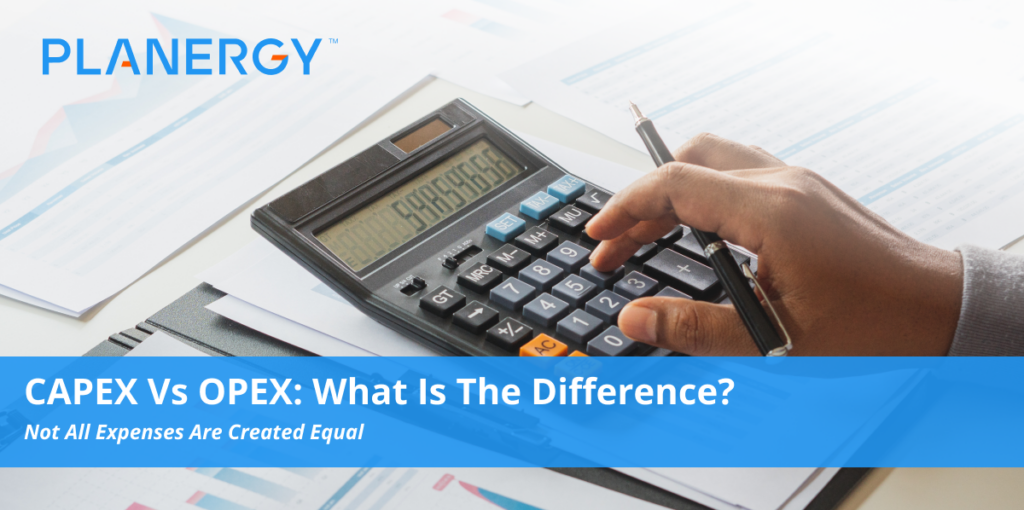For businesses of all sizes, a healthy balance sheet depends on careful management of revenue expenditures. Two categories of spend in particular, known as capital expenditures (CAPEX) and operating expenditures (OPEX), are of special importance to the overall financial health of an organization.
With a clear understanding of the differences between these two types of expenditures, procurement and accounts payable (AP) professionals can work together to ensure an optimal return on every dollar spent while ensuring accurate and complete financial records.
CAPEX vs OPEX: An Overview
In exploring how best to handle the issue of CAPEX vs OPEX, it is first necessary to understand how each type of expenditure affects your accounting processes, income taxes (including tax deductions), cash flow, and bottom line.
Capital Expenditures (CAPEX)
Perhaps it’s a new production plant for turning raw materials into new products.
Maybe it’s an entire department’s worth of new computers. It might even be an upgraded fleet of delivery vehicles for transporting finished goods to your distributors and clients.
Whatever the case, purchases that fall outside the day-to-day expenses associated with operating your company fall under the banner of capital expenses.
Purchases in the capital expenditures category are often large in scale, price, or both.
They will also continue to be used for months, years, or even decades beyond their purchase date, which makes them fixed assets. Capital expenditure covers both new assets and improvements made to existing assets purchased in the past.
Both new and upgraded/improved assets will have their book value, or the value assigned to an asset on the company’s balance sheet, updated to reflect depreciation, damage, further improvements, etc. over the life of the asset.
Generally speaking, capital expenditures are recorded as assets on the balance sheet under “Property, Plant, and Equipment.”
These purchases also appear on the company’s cash flow statement in the “Investing Activities” column to reflect the capital outlay made upfront during the current accounting period.
The company will recover the cost of these purchases over time, in value and revenue generated by the increased performance, greater efficiency, and other future benefits the purchase creates.
At the same time, the asset is depreciated, spreading the total cost of the asset over its useful life. As it depreciates, a physical asset loses a small portion of its value with each passing accounting period.
Most often, the depreciation period for capital expenses is between five and ten years, although real estate depreciation may occur over as long as twenty.
Capital expenditure budgets may also include divestment (also called disinvestment) of goods purchased in this way, recovering value and reducing debt through selling or repurposing them.
Depreciation over the useful life of the asset is especially relevant with regard to divestment. For example, in the United States, the Internal Revenue Service (IRS) has specific rules about how capital depreciation affects the tax liability assigned to an asset upon its sale or transfer.
Examples of capital expenses include:
- Production facilities and equipment.
- Improvement and expansion of existing facilities.
- Furniture and fixtures.
- Tools and hardware, and fixtures, including computers, data centers, and office equipment.
- Software
- Land
- Intangible assets such as software licenses, intellectual property such as patents, etc.
The types of capital expenditures a company makes will depend primarily upon its industry.
“In exploring how best to handle the issue of CAPEX vs OPEX, it is first necessary to understand how each type of expenditure affects your accounting processes, income taxes (including tax deductions), cash flow, and bottom line.”
Operational Expenditures (OPEX)
Keeping the lights on. Paying your staff. The latest ad campaign for your new product line.
These are all examples of operating expenditures, the expenses that enable your company to engage in the “business of doing business” on a daily basis.
Unlike capital expenditures, operational expenses are frequent, vary in both price and scale, and, in the United States, may be deducted from the company’s tax liability in the same year they are incurred.
Companies seeking to optimize their operational expenditures do so to cut costs without negatively affecting production speed, product quality, overall productivity, or competitive advantage.
Common examples of operational expenses include:
- Any expense that falls under Sales, General, and Administrative (SG&A) expenses, including:
- Manager’s salaries
- IT staffing salaries and fees
- Staff salaries for Marketing, Accounting, etc.
- Payroll taxes
- Rent
- Utilities
- Insurance
- Advertising
- Travel expenses
- Phone and Internet
- Advertising
- Sales and marketing supplies
- Property taxes
- Sales commissions
- Entertainment fees
- Depreciation of fixed assets located outside production areas.
In addition, items that have been leased rather than purchased—even those that would normally fall under CAPEX—may be instead classified and recorded as OPEX.
This helps businesses with limited cash flow make capital investments using monthly payments and still deduct the item’s total (lease) cost in the same tax year.
NOTE: Local policies, procedures, and compliance requirements vary. Always consult tax and legal professionals when developing internal policies and procedures for purchasing, accounting, and other critical business operations.
Optimizing Both CAPEX and OPEX with Automation
Regardless of the type of expenses being managed, your procurement and accounts payable teams will find it much easier to streamline your purchasing with help from a comprehensive procurement system powered by artificial intelligence, cloud computing, and process automation.
Cloud services simplify data management, ensuring every transaction is transparently and completely documented and accessible from both the office and mobile devices.
Process automation brings AI-powered speed, accuracy, and efficiency to approval processes and other workflows. Your accounting team is freed to focus on better financial reporting, analysis, and forecasting instead of low-value tasks like data entry or chasing exceptions.
And most importantly, using a system like PLANERGY integrates the procurement and accounts payable functions to create a seamless procure-to-pay environment where all expenditures are made with the best available vendors, at the best prices and terms, and available for real-time analysis.
Records are automatically updated, sourcing is improved by more accurate accounting, and vendor relationships improve through collaborative and cooperative communication.
Tax time headaches are minimized, too, thanks to data transparency and audit-friendly data trails for every purchase, complete with easy integration of depreciation and other relevant information.
Take Control of Your Business Expenses
Whether it’s a sprawling production plant for your new line of Widgets or the latest promotional keychain, every expense incurred by your business has the potential to be a source of value as well as cost for your company.
By taking a proactive approach to managing both capital expenditures and operating expenditures effectively and investing in the right software tools, your company will be well-positioned to get the most for its money.




